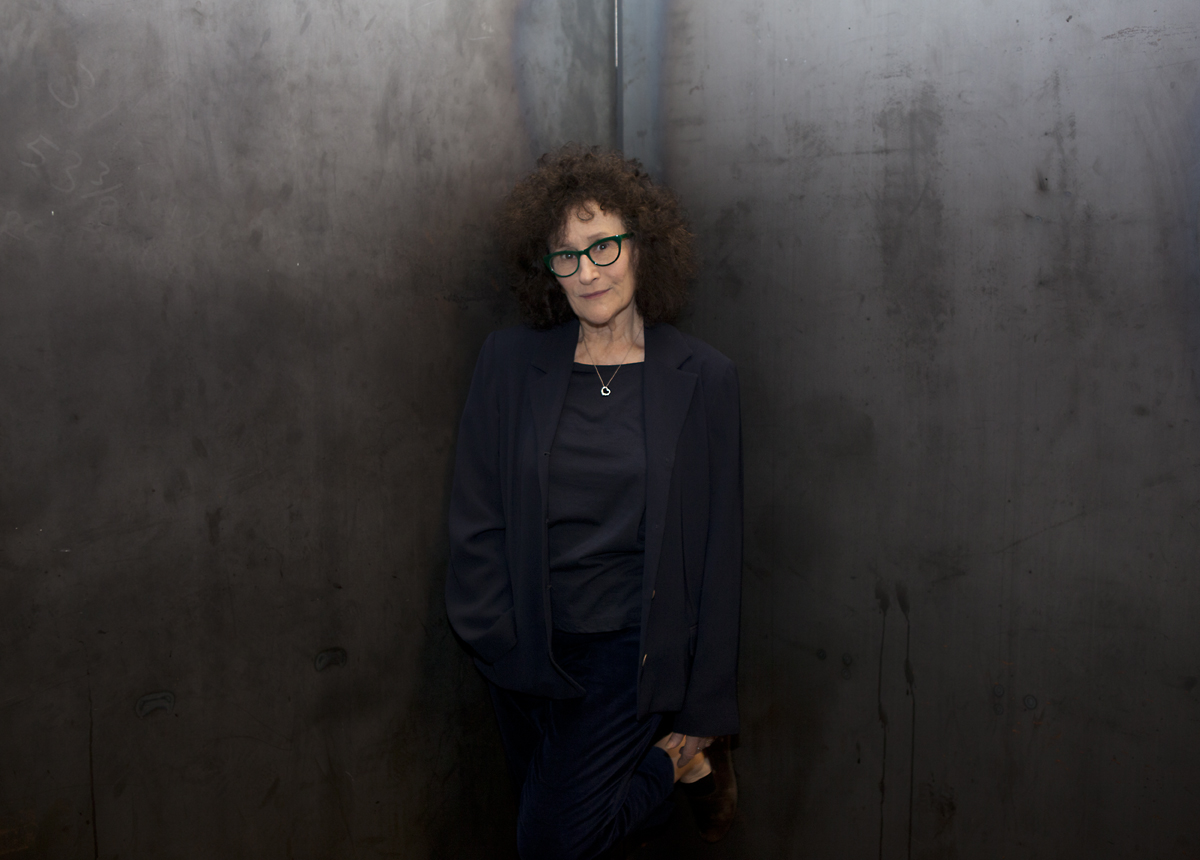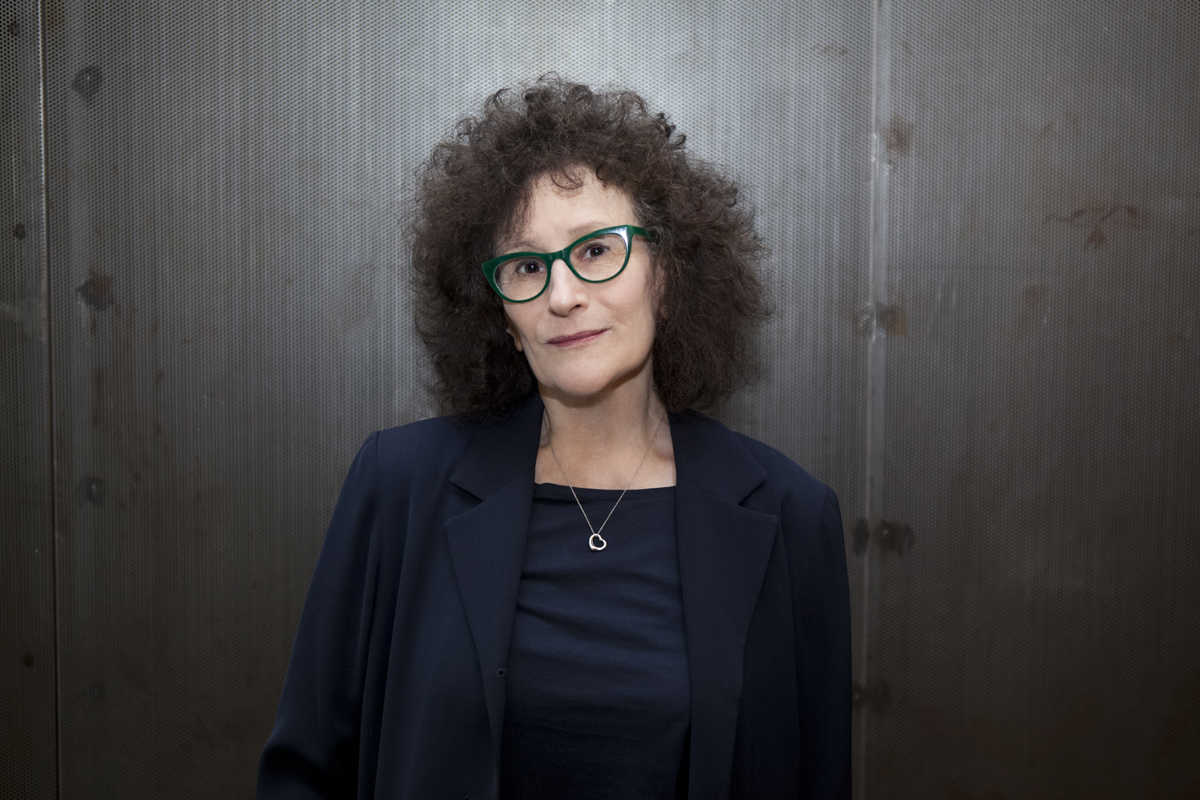Lynne Tillman Says Bye to Reason and Hi to Everything
On Monday, May 9th, the art book publisher Capricious launched Say Bye to Reason and Hi to Everything, a box set of short books by Dodie Bellamy, Cecilia Corrigan, Amy De’Ath, Lynne Tillman, and Jackie Wang at The Kitchen in New York. Edited by the writer Andrew Durbin, each book retools a genre, from poetry to art criticism to fiction, and remakes it along new political and aesthetic lines. At The Kitchen, the novelist and two-time National Book Critics Circle Award nominee Lynne Tillman read from her essay “Marking Time,” a brilliant meditation on art and time that touches on everything from Franz Kafka to Christian Marclay and is prompted by those occasions when her morning copy of The New York Times is stolen by a mischievous neighbor. Relating this petty theft to enterprising penguins who steal from other penguins’ nests to feather their own, Tillman observes: “It’s natural to be lazy, covet, steal, and it’s heartening, even gratifying, to regard such ‘bad’ traits as survival skills. I suppose it’s great that The New York Times is ever at the front door, and I can thank ‘civilization’ for that.” A few days later, Durbin and Tillman sat down for lunch in the East Village for an interview about Tillman’s collection for the series, In These Intemperate Times: 9 Frieze Columns, which collects nine short essays she’s written for the British art magazine frieze. What follows is a brief excerpt of that conversation.

Andrew Durbin: You first started writing for frieze in the late ’80s.
Lynne Tillman: I did two pieces for them. I met Amanda Sharp and Matthew Slotover in the early 1990s in London. They came to a reading I gave at the ICA in London. The first thing I wrote for frieze was on the Whitney Houston film The Bodyguard, then I wrote a very short piece on Being John Malkovich. I didn’t do anything else for them for years until, out of the blue, Jennifer Higgie, the Editor-in-Chief, sent an email to me … I think it was 2010. Maybe 2011.
That’s when you started the column, “In These Intemperate Times,” which we partially collected for this book for Capricious.
Yes. Jen asked if I wanted to do a column. I was very surprised and wrote back, “Can I write about anything I want? Do I have to write about art?” She said, “No, you can do whatever you want.” I thought, “that won’t be hard,” but of course, everything is hard when it’s due.
How has the column changed since 2011?
Writing something very short, I had to learn how to be even more economical than I usually am with words. Then it went from 850 words to 750 words. Now I’ve tried to focus more on a specific object.
Well, length has changed a lot. I did notice a shift, in the newest pieces, to a focused brevity, which is quite different from the earlier ones. Those meander in the best possible way. The irony essay, for example—“Seriously?”—is quite short and to the point. “A Knowing Look,” another fairly recent one on the film Foxcatcher, is similar to that. I was interested in your trend toward brevity, especially in the most recent one, the shortest, which is about what you call “Global Art.” The shorter you get the larger your argument, Lynne.
Right. The bigger the concept the smaller the piece. This has nothing to do with Trump.
I’m glad you read the essay “Marking Time” at the book launch earlier this week at The Kitchen. I’ve been thinking a lot about the ending of that essay, where you consider Kafka’s “Josephine the Singer, or the Mouse Folk” and argue that it’s a form of art criticism. This seems obvious to me now, but I hadn’t thought about the story like that before. Is that particular piece an influence on you?

Kafka is an influence on me, but I hadn’t read that story until four years ago. I started doing the kind of stories, fiction on art, in 1982; Jane Dickson asked me to write a piece to accompany the portraits she was doing of Charlie Ahearn, her husband, and her. She said, “You live in a couple, would you be interested in something about living in a couple?” So I wrote “Living with Contradictions.” A little later, especially in using my character Madame Realism for the Art in America essays, my concept was that I wasn’t a trained art critic or art historian. And I didn’t want to ignore that, I wanted to use it. Fortunately, Craig Owens was the Senior Editor then, and Betsy Baker, who was Editor-in-Chief of Art in America, was good friends with writers like Harry Mathews and John Ashbery. She appreciated fiction, what I was doing. You know how funny insecurity is: insecurity can be the mother of invention. I couldn’t present myself as doing something I hadn’t been educated to do.
How did you come to art?
That had a lot to do with my father—to some extent my mother. My father designed textiles and he had his own business with his brother (they also manufactured the textiles). I grew up around an interest in color, pattern, design, and fabric, what material felt like. So from a very early age, I was interested in those things. Also, they took me to museums. My mother was an amateur painter, doing that when I was a teenager. So that was around the house.
In the second grade, I fancied myself really good at art. We had art class once a week—I went to a good public school on Long Island— but in the middle of second grade a girl, Jane Hope Greenberg, moved into the neighborhood, and she was better than me. She had had lessons, and when I looked at her stuff, I just gave up. In high school, I had a friend, Susan, who was into art, and her mother was an artist. I started doing drawings then, of my dog Lady. Then, when I went to college, as an English major/History minor, I was miserable. I met a girl—she was a double-major in art and music—who suggested I take my electives in studio art. I thought, “OK.” So I took all my electives in art. I studied watercolors first, with Ron Gorchov …
Oh, I know Ron Gorchov. He’s amazing.
He is amazing. I had a drawing class with Doug Olson. Painting with Gorchov. Life drawing classes. I took a class every semester for my last two years of college. I thought maybe I’d also be a painter, along with being a writer. I was the only non-art major in the art department, and I remember one time, it was winter and very cold in the art studio on the top floor, I had my fur coat on, one of those ratty raccoon kinds that you could buy for three dollars. I was stretching a canvas over a large frame, if you can picture it, an upside-down “V” was behind my head. I was stapling the bottom. Gorchov saw me, walked over, and said, “You’re going to be a very eccentric old woman.” So, I had that experience with art, even took a graduate class in painting because my teachers were encouraging to me, but I realized I could never be a painter. I wasn’t invested in the canvas, in that space. I was invested in the page. I had always been, from a very young age. I think making art, I mean, whatever it was I was making, underlies a lot of my reaction to art, to why things get made the way they do, to thinking about why you do it this way or that, and about how different the space of a canvas is from a page.
I think about a difference between you and a professional class of art critics—I feel like unlike them, you don’t necessarily gravitate toward one group of artists or a certain set of ideas. I feel like you have a diverse approach to artists.
Do you mean I’m indiscriminate?
Yes, which is a great thing, isn’t?
I discriminate differently. But yes.
Andrew Durbin is the author of Mature Themes (Nightboat, 2014) and the chapbook MacArthur Park (Kenning Editions, 2015). His work has appeared in BOMB, The Boston Review, Flash Art International, Poetry London, Text Zur Kunst, and elsewhere. A contributing editor of Mousse, he co-edits the press Wonder and lives in New York. His first novel, Blonde Summer, is forthcoming from Nightboat in 2017.